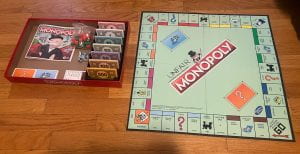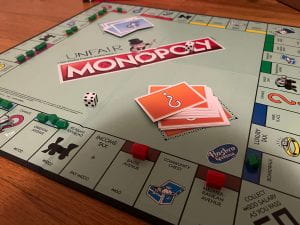My game is called Misinformation Telephone. It’s a digital, online game meant to represent how disinformation is created and spread. In it, one player takes the role of the “consumer” and everyone else takes the role of the “reporter.” Each reporter has a specific role (specifically, they’re either a supporter or a critic of the fictional politician Bob Smith). The goal of the game for the reporters is to get the consumer to agree with their stance.
The game takes place in rounds. In the first round, original stories are given to each of the reporters. Each reporter’s job is to change three words of the story so it fits their stance better (as in, they need to bias it). The next round, the goal is the same, but instead of being given original stories, the reporters are being given a story second-hand from another reporter. This is where the “telephone” part of the game comes from; each story gets more and more distorted until the end of the game, when it finally reaches the consumer.
My goal for this was to represent the unreliability of the modern news landscape through a fun, Jackbox-style game. Because players can change the story however they want, they can go in absurd directions with their changes, which–in effect-makes each resulting story a parody of sensationalist reporting in the real world. I also thought it’d be interesting to put most players in the position of the reporter, since in real life, we’re usually the consumers–so switching people’s point of view on this phenomenon could add some insight into why things are the way they are.
This might seem strange, but I was largely inspired by the Anna Blume poem while making this. The way it parodied the overly flowery language of conventional romantic poetry made me realize the value absurdity can have in critiquing a trend. In the same way that the poem goes on and on with “thou”s and “thy”s to mock that kind of media, this project mocks inflammatory news articles by aiming to create stories as ridiculous as possible.
The pictures below show the game in action (from a reporter’s perspective). The first picture is from when they’re modifying a story, and the second is from the end of the game, when they’re watching the consumer evaluate the story.


Both versions of my game are available below. The new version has features like better visuals and a proper timer, but I’ve had some inexplicable issues when trying to run it, so the old version may be more stable. The networking tools I used in Unity don’t seem to work for HTML5, so I can’t upload the project to itch.io, and instead the game unfortunately needs to be downloaded.
https://drive.google.com/drive/folders/13t3vnGiqXN3bPARVVXrchaDz519qZu-V?usp=drive_link




